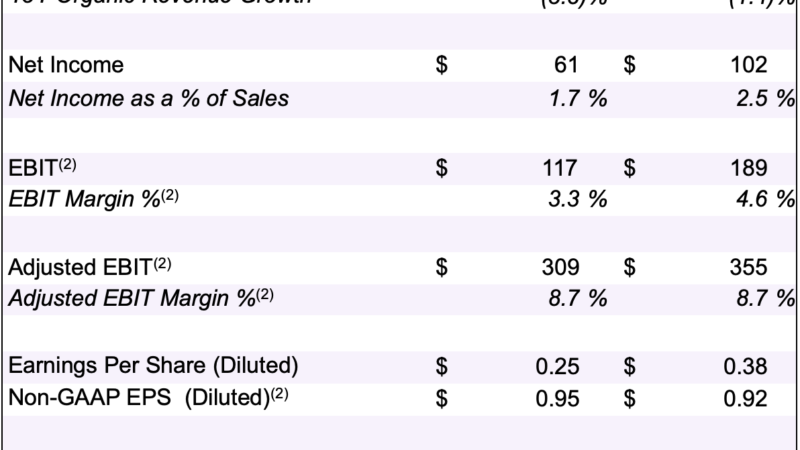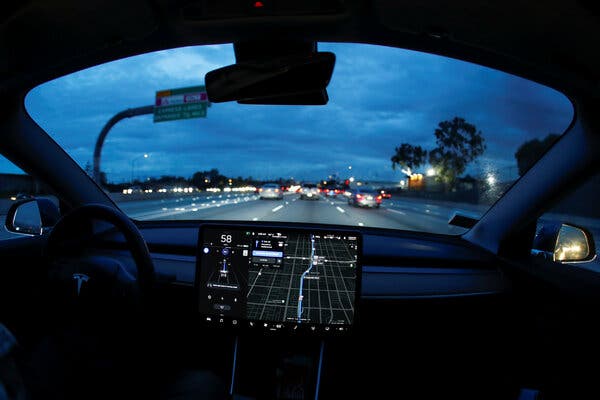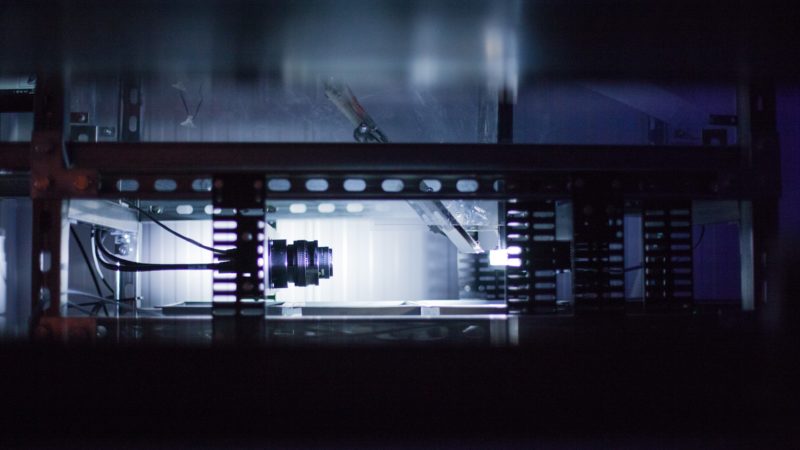A brief history of video and technology in baseball, and how it helped teams steal signs – The Boston Globe
Advertisement
It took little time to discover the potential benefits.
“I’ll never forget it,” said Eckersley. “We could see the signs during the game. If guys got to second base, we’d run down from the clubhouse and say, ‘I think they’re using the second sign!’ If they didn’t change the signs, they were stupid.
“But we thought we were really neat. Obviously, this has been going on for a long time.”
Another Hall of Famer, Padres great Tony Gwynn, became a pied piper for the use of video as a scouting and training tool in the early 1980s. His wife recorded some of his games during a slump in early 1983, allowing him to almost immediately identify and fix a mechanical issue.
Yet while video’s applications as a tool for improvement have long been evident, its use for cracking other teams’ codes has an equally lengthy history.
Sign-stealing has always been an accepted and legal part of baseball. For years, players have been lauded for solving opposing pitchers like a Rubik’s Cube, whether by identifying how they tip their offerings, by seeing a pitcher’s grip from second base and relaying it to a hitter, or by identifying which sign in a catcher’s sequence is being used.
Advertisement
But there have been plenty of efforts to decipher opponents’ signs that have pushed the boundaries of acceptable practices: scoreboards flashing a light to indicate a pitch type, bullpen members holding binoculars and signaling to hitters, or personnel in the bleachers doing the same. Just as video revolutionized how players and teams trained and prepared, it likewise offered revolutionary potential for espionage.
According to former Red Sox general manager Dan Duquette, the team spoke to the American League in 1995 and 1999 about suspicions that the Cleveland Indians were using a camera in center field — ostensibly there for scouting purposes — to steal signs.
Opponents believed that someone who was watching the feed whistled to indicate to hitters when fastballs were coming. The Sox brought their concerns to an umpiring crew in September 1999 and the Indians were told to cover the camera with a towel. The league preferred self-policing to an intervention.
Over time, technology became more sophisticated and more accessible. By the 1990s, several teams started using the Baseball Analysis and Tracking System (BATS) for pitch-location and spray-chart data. By the early 2000s, BATS (whose parent company, Sydex Sports, declined interview requests for this story) incorporated video, creating large and easily sorted libraries that allowed players to become ever more precise and efficient in their ability to review at-bats in games.
Advertisement
BATS is now a staple of nearly all big league clubhouses; on its website, Sydex claims that 29 big league teams use it. The net result of such systems is that in the nearly four decades since Gwynn made video a key training tool, nearly all big leaguers are now well-versed in its use. The in-game examination of video has gone from rare to nearly universal.
Video usage ramps up
The BATS system offers four angles from which to analyze at-bats: a front view, two side views (one useful for lefties, one for righties), and a fourth that can vary from park to park. In his 10 years in the big leagues, Red Sox first baseman Mitch Moreland has seen reliance on it grow.
“Nowadays I think it’s a lot more prominent in the way guys approach the game — how they study their swing not just daily but at-bat by at-bat to see how they’re approaching different pitches, if they’re making the move they want to make, whatever they’re working on,” said Moreland. “The game is so much more analytical than it was and more technical than it was when I first came up.”
A few years ago, a member of the Red Sox coaching staff lamented that players would conclude a disappointing at-bat and run “straight to the computer” to look at their swings and pitch selection. But in 2018, with a managerial change from John Farrell to Alex Cora, the turnover of the coaching staff, and the arrival of hitting sage J.D. Martinez — one of the most precise technicians in the game — the team’s embrace of video jumped to new levels.
Advertisement

Cora was renowned for his ability to identify tipped pitches during his playing career, and was part of sign-stealing as a coach with the Astros in 2017. He arrived in Boston preaching attentiveness to details, including opportunities to pick up on teams giving away pitches. Much of that effort was to be done from the field — he wanted players in the dugout and on the bases to be locked in on what an opposing pitcher was doing — but also included a heavy video element.
Cora, his coaches, and the advance scouting team of Steve Langone and J.T. Watkins scoured video for any tells by opposing pitchers. They also examined catcher sign sequences with runners on base to figure out which sign typically was being used to call a pitch.
Prior to every game, their hitters met to go over scouting reports — digesting information not just about pitch mixes, count tendencies, and the shape of pitches, but also, according to multiple major league sources, information about tipping, sign sequences, and signals from runners on second to hitters. All of that was perfectly legal.
On top of that, hitters became more active in their use of video. Martinez had video taken of all of his swings during batting practice. Other players soon followed. Banter among Red Sox players in 2018 about their swings was constant — and a frequent source of in-game attention via the BATS system, thus bringing them into proximity with another game-changing technological innovation: replay.
Advertisement
MLB approved the use of replay to review disputed calls for the 2014 season. It started using the Hawk-Eye system, with up to 12 synchronized live feeds of games to show every play from a variety of angles. The feeds were received in a New York hub, which umpires could then examine when asked to rule on a managerial challenge.
Yet rather than centralizing replay decisions and leaving them under the oversight of umpiring crews, MLB elected to leave the challenge in the hands of teams. Teams were given access to the same live feeds available in New York, including several angles not being used for the broadcast.

Those live feeds were examined by a team staffer in the clubhouse — in the case of the Red Sox in recent years, it was Watkins — typically at a station adjacent to the BATS setup. Whereas BATS doesn’t make video available until at least the conclusion of an at-bat, replay made a dozen video feeds available in real time, including on occasion a center-field view that captured the catcher’s signals.
MLB’s report on the Red Sox acknowledged that the Hawk-Eye system does not always feature a center-field view, and two major league sources estimated that the Red Sox had such a view about 30 percent of the time in 2018.
Wading into the gray area
Since the introduction of replay, MLB has prohibited the use of that electronic equipment to steal signs or convey information, though its report on the Sox noted that prior to 2018, many teams didn’t see that prohibition as applying to players and staff in the replay room to identify sign sequences.
But in September 2017, MLB fined the Red Sox for communicating sign-sequence information to their dugout via a smartwatch and the Yankees for a pre-2017 use of a dugout phone to get sign-sequence information.
MLB tried to clarify some of the gray area that had long existed surrounding the role of video in sign sequencing. In September 2017, it issued a memo warning teams that they faced more significant penalties (including the loss of draft picks) for further violations. In March 2018, MLB issued another memo to teams stating unequivocally that using live replay feeds to decode signs and sign sequences was illegal.
Still, the replay screen typically remained just a few steps from the dugout, and people in the game who’d figured out how to steal signs and sign sequences by using it remained there as well. Their job descriptions included doing just that for scouting purposes.
Meanwhile, foot traffic around the area (for the Red Sox at Fenway Park, it was the batting cage just behind the dugout) remained high, at least in part because of the widespread use of BATS for in-game purposes.
That proximity likely played a part in the rules violations by the Red Sox in 2018. Players were in the batting cage area where Watkins monitored the game. When he had a Hawk-Eye feed from center field, Watkins could discern whether an opposing team was using the same sign-sequence information that it had in a previous game.
Players cared about the game’s details, and wanted to know what they could pick up when on the field. It’s easy to envision a player, during a trip to review his swing on the BATS system, asking Watkins what sign in a sequence was being used to call pitches. If that happened, the pressure on Watkins to offer accurate information — rather than doubling down on pregame information he now knew to be wrong — would be enormous.
“Watkins was placed in a very difficult position by virtue of his dual role as the person responsible for decoding signs pregame and as the person responsible for operating the Red Sox’ replay system (a structure, as I have previously noted, that was not uncommon within MLB Clubs),” MLB commissioner Rob Manfred noted in his report.
“Watkins admitted that because he watched the game feeds during the entire game, he was able to determine during the game when the sign sequences he provided to players prior to the game were wrong. Thus, he was placed in the difficult position of often knowing what the correct sequences were but being prohibited by rule from assisting the players by providing the correct information.
“While this does not excuse or justify his conduct, I do believe that it created a situation in which he felt pressure as the Club’s primary expert on decoding sign sequences to relay information that was consistent with what he naturally observed on the in-game video.”
Violations inevitable?
Some believe that the lines of demarcation between what was and was not acceptable were blurry. After all, given that the BATS system features a front view, it’s possible for players to pick up sign and sign-sequence information during reviews of in-game at-bats. A major league coach not affiliated with the Red Sox noted that just in reviewing at-bats via the BATS system, coaches and players sometimes pick up on how a team is delivering its signs even without trying to do so.
If players notice a change in the sign sequences from their pregame reports, are they supposed to ignore it? Are they supposed to withhold such information from their teammates? What about an advance scout who happens to be the in-game replay coordinator?
That’s what the rules require, yet MLB didn’t consistently monitor compliance with those replay rules until the 2018 postseason. In the meantime, it’s hard to imagine people ignoring information that they knew to be accurate. Perhaps that explains why the publication of the findings on the 2018 Red Sox hasn’t inspired the same public outcry that occurred in the wake of those about the 2017 Astros.
Nonetheless, while some members of other organizations consider the Red Sox’ violations relatively minor, at least one coach whose team played them in 2018 noted his concern.
“It’s taking a live game feed and using it to affect a live game,” he said. “That’s not trivial to me. The punishment for that should be strong. There should be some fear.”
At least during the 2018 season, there wasn’t. Members of the baseball industry cited their belief that the use of live feeds to steal sign sequences had become widespread, if not ubiquitous.
In that environment, some viewed the prohibition on using the replay feed to steal sign sequences as the equivalent of driving 65 miles per hour in a 55-m.p.h. zone — with no police on the road. Violations were bound to happen. Just as certain, in an era of player movement, violations were bound to be discovered.
While MLB did a poor job of policing its regulations until the 2018 postseason, it nonetheless had established the need to punish transgressions should they be discovered. With the release of MLB’s report on the Red Sox following a months-long investigation, the consequences of such behavior have now become a bit clearer, as baseball tries to offer moral clarity to a video era nearly 40 years in the making.
Alex Speier can be reached at alex.speier@globe.com. Follow him on twitter at @alexspeier.





